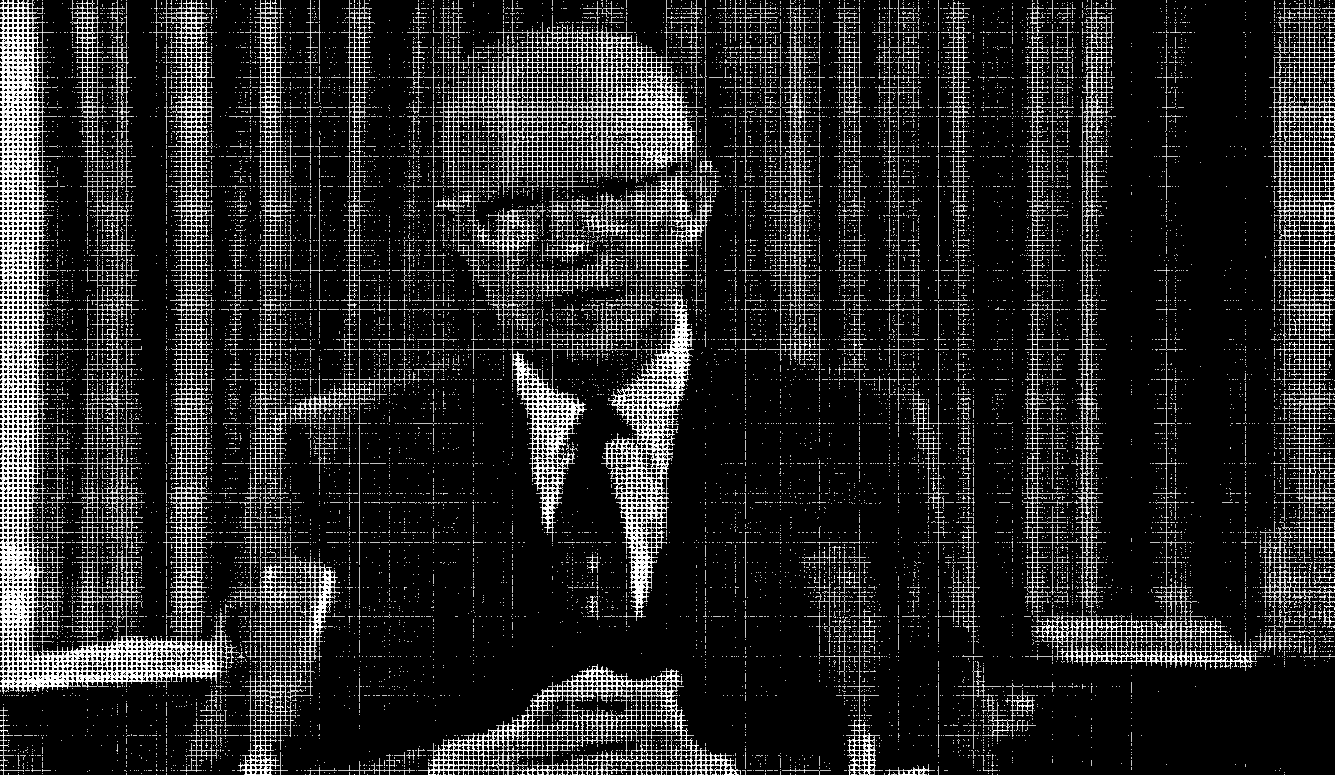Politics
Military-Industrial Complexities
President Eisenhower’s warning deserves to be better understood.

Ours is a culture suffused with conspiracy theories from across the political spectrum, ranging from wild conjectures about stolen elections and the Deep State to glib assumptions of systemic racism and climate-change denial. All of these are premised, ultimately, on the notion of control: whatever directions our politics or our societies take, the decision to take them is attributed to a secretive elite rather than to the broader population.
One of the most enduring and most influential conspiracy theories—a sort of template for many that have followed—was inspired by the farewell address of US President Dwight Eisenhower on January 17th, 1961. In that speech, the outgoing Chief Executive introduced the ominous term “military-industrial complex” to describe the close link between the American war machine and its corporate contractors. “The potential for the disastrous rise of misplaced power exists and will persist,” Eisenhower warned. “Only an alert and knowledgeable citizenry can compel the proper meshing of the huge industrial and military machinery of defence with our peaceful methods and goals so that liberty and security may together prosper.”
Since 1961, the concept of the military-industrial complex (MIC) has become a staple denunciation for critics and activists to wield against the world’s multi-billion-dollar armaments industry and its influence (“sought or unsought,” said the President) over civilian leadership, particularly American. Oliver Stone’s 1991 film JFK and Eugene Jarecki’s 2006 documentary Why We Fight argued, respectively, that the MIC was behind the Kennedy killing and the US War on Terror. The implications are clear: nominal democracies are vulnerable to the cynical connivances of a stronger, richer, unelected agency that overrides the will of peace-loving publics to maintain a money-making war economy.
Is this what Eisenhower originally meant? To understand the phrase it is helpful to consider the historical circumstances in which the 34th president found himself. A veteran hot warrior who had led the Allied invasion of Nazi-occupied Europe and a dedicated cold warrior who held the US in firm opposition to the Soviet Union, Ike had long experience in budgeting for military supplies. By 1960, America and the USSR were moving towards respective stances of nuclear deterrence, in which the arsenal of either side was perceived to be big and deep enough to destroy the other in a retaliatory strike.
Indeed, one of the themes of the 1960 election campaign between John F. Kennedy and Eisenhower’s vice-president Richard Nixon was the so-called “missile gap”—the Russians’ alleged superiority in ballistic rockets that JFK charged had left the US open to an overwhelming Soviet attack. Nuclear deterrence was predicated on an ongoing parity in strength between the two rivals—no matter how much overkill such strength represented in application—so that any numerical or technological advantage for one superpower required speedy compensation by the other.
The “permanent armaments industry of vast proportions” worried the President for its potential to indefinitely divert national resources from butter to guns, but he never doubted the reality of the Communist threat and never suggested that the MIC would fabricate conflicts where its wares could be consumed in battle. (Incidentally, too, JFK’s bellicose rhetoric about closing the missile gap would hardly have put him on the MIC’s hitlist.) An early draft of Eisenhower’s parting remarks, composed by speechwriters Malcolm Moos and Ralph Williams, used the wording “military-industrial-scientific complex” to implicate the research establishment no less than those of Wall Street and the Pentagon.
Ike had already cancelled production of the high-tech and expensive B-70 bomber, for example, and in his January 17th address he spoke of how “a government contract [had become] virtually a substitute for intellectual curiosity … [T]he domination of the nation’s scholars by Federal employment, project allocations, and the power of money is ever present—and is gravely to be regarded.” His point was not the imminence of a coup d’etat or of a faked “enemy” invoked to distract the gullible public, but rather that the development and stockpiling of ever-newer and costlier weapons programs of only abstract operational value represented a continued drain on the American treasury. New arms projects, he said, “must be weighed in the light of … the need to maintain balance … between cost and hoped-for advantage.”
In later years, these concerns would be borne out in extravagances like the B-1 bomber and the Strategic Defence Initiative (“Star Wars”), as well as in reports of US taxpayers being charged spectacularly inflated prices for mundane items like hammers and toilet seats purchased for military use. Politicians, as well, have been known to push for big-ticket naval or aerospace projects that create jobs in their constituencies, whether or not their military value justifies the outlay of funds.
Ironically, though, one factor in the United States’ Iraq fiasco was Defence Secretary Donald Rumsfeld’s initial determination to send a “lean and mean” force to do the work many generals believed would require a much heavier deployment of troops and equipment. In the Secretary’s term, Robert Kaplan revealed in a 2008 Atlantic article, “Rumsfeld reduced the more than $3 trillion of improperly recorded, unaudited Pentagon transactions to hundreds of billions.” Whatever the merits of America’s Middle East strategy, it was not a red herring concocted to absorb tanks and helicopters. There were good and bad reasons for Washington’s investments in Baghdad or Kabul, but keeping Boeing or General Dynamics afloat were not likely among them.
So the notion that American foreign policy is a mere alibi dreamed up by wicked CEOs as they write themselves fat bonus checks is not an accurate extrapolation of Eisenhower’s original caveat. He was dismayed by the share of the ballooning US federal expense sheet given over to munitions, and by the portion of the US economy that was devoted to military science and manufacturing. The generals and theorists who pressured him with their latest proposals for matching or outmatching the Soviets were not dishonest, he felt, but they were certainly unrealistic in the face of fiscal reality.
The day after his farewell speech, Eisenhower held a press conference, during which he spoke of widely published advertisements for Titan rockets and other military hardware that made for “an insidious penetration of our minds that the only thing this country is engaged in is weaponry and missiles. And, I’ll tell you, we just can’t afford to do that.” Yet, serious though Eisenhower’s indictment was, he was speaking of a general procurement issue between the American government and its technical advisors, during an unprecedented period of staring down a highly armed national opponent in a new and very dangerous kind of war. He was not speaking of a plot. For all its appeal to conspiracy theorists, the MIC is not the all-purpose explanation—the ultimate ulterior motive—its latter-day invokers believe it to be.
In 2023, indeed, with the Cold War behind us and with America’s global dominance in danger of being eclipsed by that of China, the military-industrial complex has become less of a bogey. But the same concern that private business interests can outweigh public welfare or popular sentiment remains valid in criticisms of Big Tech (for its profitable invasions of privacy and promotion of polarizing messages), Big Agriculture (for its profitable expansion of factory farming), and Big Pharma (for its profitable medicalization of hitherto ordinary human conditions). Alarms have also been raised about the prison-industrial complex (corporate developers of penal institutions require a steady stream of convicted criminals to fill them), the academic-industrial complex (universities require constant student recruitment and higher tuitions to pay for their sprawling bureaucracies), and the attention-industrial complex (advertiser-directed clickbait requires endless distraction of our eyes and minds).
There have even been assertions of a sports-industrial complex (billionaire team owners exploit loyal fans and disposable athletes at the expense of enjoyable games), a nonprofit-industrial complex (lavishly funded charities co-opt the agendas of their grassroots donors), a climate-industrial complex (solar and wind energy firms hype the prospects of environmental calamity), and a wedding-industrial complex (caterers and planners encourage an arms race of extravagant nuptial ceremonies). In rather the same way that the Watergate affair led the suffix “-gate” to designate any subsequent political scandal (even though the name of the Washington, DC hotel bore no relation to details of dishonesty in Richard Nixon’s White House), the term “-industrial complex” has come to mean any suspicious concentration of economic clout away from the people most affected by it. Which, these days, may be all of us.
Even if Dwight Eisenhower’s military-industrial complex was exaggerated into a greater threat to democracy than it really was, then, it was a compelling idea that still captures the general wariness felt by all citizens—from the MAGA and Brexit Right to the BLM and #MeToo Left—toward the unfathomably interconnected systems in which they live. Within such a planetary web of authority and dependence, no one is entirely in control of their own circumstances; it’s one thing to cede some degree of personal autonomy to the local or even national legislators we’ve chosen to represent us, but who have the legislators ceded to? What if the wars we fight, the leaders we select, the goods we consume, and the lessons our children are taught in school are not the products of our consensus but have been foisted upon us for someone else’s gain?
Our governments make laws, but industrial complexes of some kind or another may be dictating what the laws can be, and how we finally abide by them. At their most simplistic, contemporary elaborations on Eisenhower’s 1961 warning cast a lot of blame and avoid much responsibility, devolving into easy and untenable conspiracy theories about issues better explained with better information. But at their most insightful, they remind us of the unwarranted influence, sought or unsought, of wealth over right, and to gravely regard the ever-present, potentially disastrous rise of misplaced power.





